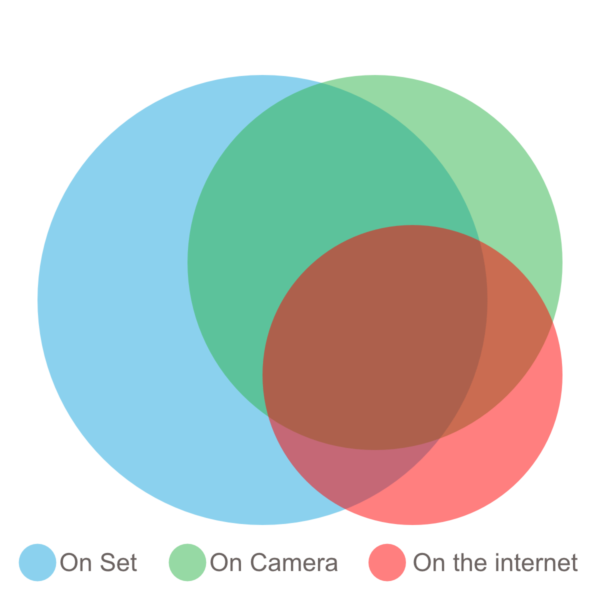During the creative process it’s important for everyone to strive to expand beyond their inner most comfort zone and explore new ideas so we can find that space “where the magic happens”. However while we strive for new heights it’s also critical to think beyond the immediate and respect our own boundaries and those of the people we work with. The excuse to get outside of our comfort zone is often abused, compounding over time and making it harder and harder for us to grow in the future. For non-agency models this is commonly exemplified with nudity but needs to be considered for a wide variety of topics from sensitive issues that may include medical or political topics down to more mundane concepts as which brands you may or may not want to be associated with.
For aspiring models I recommend looking at comfort zones in three main categories, What happens on set, What is actually captured on camera, and what makes it out to the Internet.
On Set
It might be at a shoot location or studio but includes all the behind the scenes, from getting into wardrobe & makeup, posing, adjusting lights and camera angles, even conversations and vocabulary.
On Camera
Is what gets saved to a memory card, the shutter clicked or video was running. There might be an intent to modify what was captured, either with a simple crop or handling it off to a digital artist for complete rework but pixels were recorded and exist on a hard drive somewhere.
On the internet
Or In Print is what we choose to show the world, Usually our finished product but in some circumstances could include behind the scenes or work in progress as well. Different platforms may have different standards but how do you and your project align with them or any future publishing options that may arise?

As I mentioned earlier, this probably comes up more with nudity, implied or otherwise but I want to be clear on it’s importance for all shoot concepts that you work on. I don’t want to type a whole book giving countless examples that may never apply to your thoughts or experiences but I’m hoping one hypothetical “Sensitive Topic” will get you thinking.
A diabetic needing an insulin shot is a critical event so it might very well happen during a shoot, though they might head for a restroom at the mall, there might be less concern with anyone on a closed set seeing them. There are a lot of advertisements surrounding this topic, from awareness to specific products and services and some models may be eager to be associated, while another may have other work they don’t want associated and prefer not to be identifiable in the images. Knowing this in advance will help control what we capture on camera but we might go ahead with some shots under an expectation of later editing or review to meet our final requirements for publication.
While modeling agencies and big corporate jobs have long contracts outlining fine details in legalese, small markets may not include phrasing around these topics at all but shouldn’t be adverse to adding a succinct statement or addendum. The same applies for personal projects and portfolio work, granting permissions for one sensitive topic doesn’t have to include everything, in our above examples it’s unlikely either model would want their likeness being modified to represent drug use.
These comfort zones aren’t always clear cut and will vary to some degree with every shoot due to location, concept and maybe even paycheck. Over time as you get more experience you might find they shift considerably. The goal here is to be aware of them so you make informed personal decisions with each project you work on. If you’re unsure if or how something fits into this don’t hesitate to ask. It’s always easier to explain when I know the context you’re thinking of and you’ll be able to retain the relevance from a conversation better than just reading an article aimed at a broad audience.